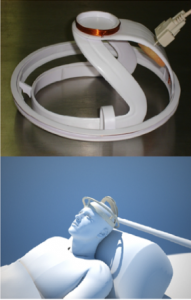Researchers are about to take a big step toward better understanding a tiny air pollutant. A U.N. expert panel earlier this month agreed on a technical road map that will guide the first multinational effort to create a standardized emissions inventory of black carbon, a kind of microscopic soot particle. Scientists say that black carbon emissions play an important but poorly understood role in both global climate change and air pollution. Continue reading New Agreement Casts Spotlight on Efforts to Inventory Black Carbon
All posts by LL
Spain replants after centuries of deforestation
First broadcast and published by Deutsche Welle: [html] [mp3]
Around this time of year in the Sierra de Guadarrama, a snow-capped mountain range outside Madrid, the snow is starting to melt. Below the tree line, the melting water soaks the earth in dense stands of pine trees. Further down, holly, oak and ash trees line the banks of mountain streams, and goats graze between granite rock formations.
Continue reading Spain replants after centuries of deforestation
Lone pilot’s Arctic mission to map dark side of carbon
The sky north of Ellesmere Island had just cleared when Matevz Lenarcic, flying alone in a Pipistrel Virus airplane at around 3,600m (10,000ft), got a call on his satellite phone. His friend following the weather on a computer in Slovenia had spotted heavy clouds and snow closing in on Lenarcic’s destination, an airfield near Resolute Bay, in the Canadian Arctic.
Lenarcic, a Slovenian pilot and adventurer, had departed Longyearbyen, Norway, early that morning. When he reached the North Pole, he tipped the ultralight plane’s wings over and circled the Pole in a whimsical, if brief, round-the-world flight. Two hours later, shivering despite the immersion suit he wore, Lenarcic faced a more serious decision: race the storm to Resolute Bay or divert to Eureka, a nearby weather station with no facilities for protecting his plane after landing.
Continue reading Lone pilot’s Arctic mission to map dark side of carbon
Cheap Magnetic Helmet Detects Some Kinds of Brain Damage
 A helmet that sends a magnetic field through the wearer’s head might someday offer a quick way to reveal whether the brain is swelling or bleeding as the result of an injury.
A helmet that sends a magnetic field through the wearer’s head might someday offer a quick way to reveal whether the brain is swelling or bleeding as the result of an injury.
In a prototype of the helmet, a small halo-like coil generates a magnetic field above a person’s head; another coil, just above the ears, detects the magnetic field induced in the volunteer’s brain. Because liquid such as blood affects the magnetic field’s phase, the team behind the device was able to distinguish eight brain-injured patients from 46 healthy volunteers in a pilot study, they report in the journal PLOS One. Continue reading Cheap Magnetic Helmet Detects Some Kinds of Brain Damage

